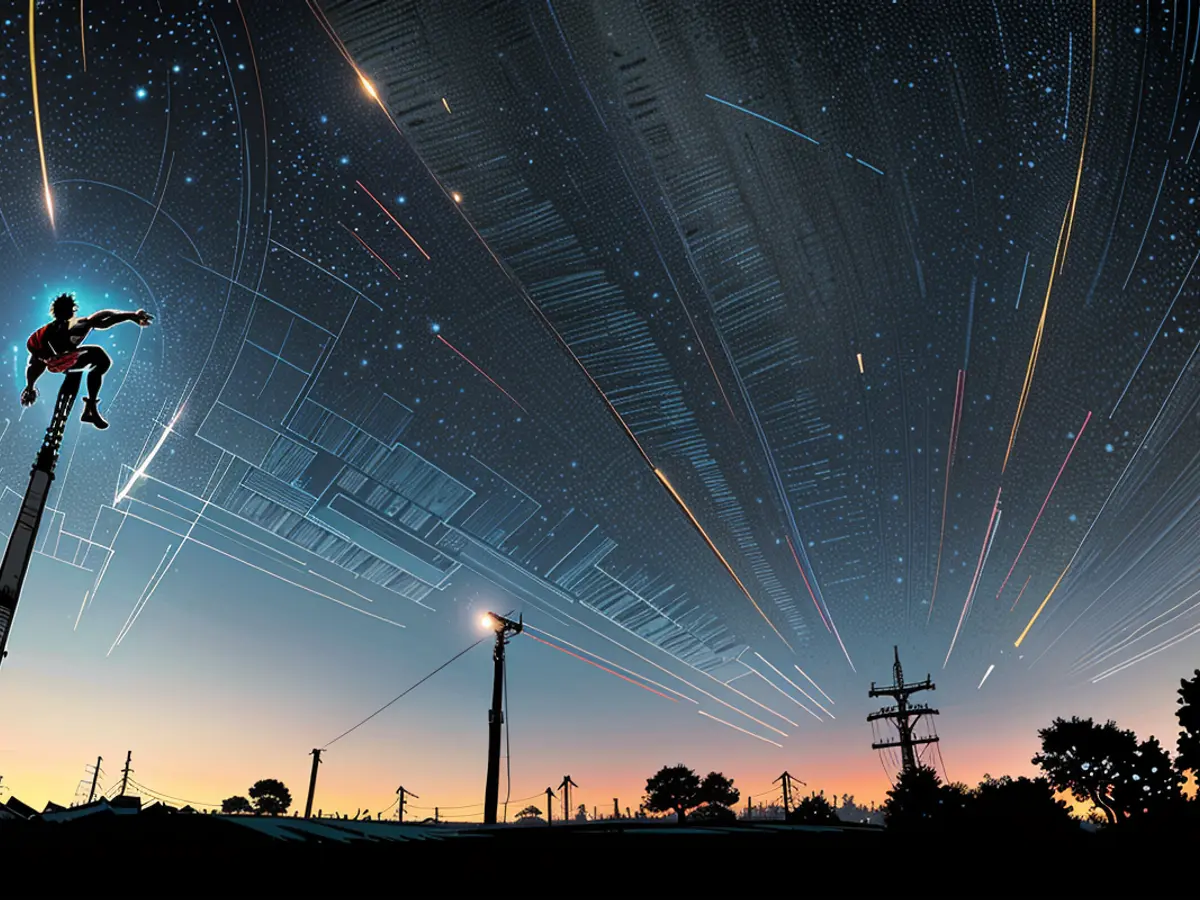The Orionid meteor shower is drawing near its apex.
Every autumn, the night sky puts on a spectacular display with the annual Orionid meteor shower taking center stage. These meteors are caused by debris from Halley's Comet and create a breathtaking celestial event in mid-October. The peak of activity occurs around October 21st, but isolated meteors can be seen from October 2nd to November 7th.
The Orionids get their name from the constellation Orion, where they appear to originate. In astronomy jargon, this is known as the radiant, which is the apparent origin of meteors in the night sky. Betelgeuse, a distinctive star in Orion, serves as a guide to locate the radiant of the Orionids.
The Orionids are known for their blazing speed and brightness. They race through Earth's atmosphere at around 66 km/s (237,600 km/h), leaving glowing trails behind that can be seen for several seconds. This high speed makes the meteors exceptionally bright, making their observation all the more spectacular.
Debris from Halley's Comet
The Orionids are formed from the debris of Halley's Comet, which makes its journey around the sun every 76 years. Each time the comet approaches the sun, it leaves a trail of dust and rock in its wake, which Earth crosses in October.
Halley's Comet, the source of the Orionids, is one of the most famous comets in human history. For centuries, it has captured the imagination of people and been considered a harbinger of significant events. Although the Orionids were not scientifically studied until later, they now serve as a stunning example of the intricate relationship between cosmic events and our planet.
When and where to see them best?
The prime opportunity to observe the Orionids is in the hours following midnight until early morning, when the constellation Orion is at its highest in the sky.
The optimum viewing conditions are found in areas far from urban light pollution. Of course, a clear, cloudless sky is a crucial prerequisite for fully appreciating the spectacle.
The following debris responsible for the annual Orionid meteor shower comes from Halley's Comet, which makes its appearance every 76 years. During October, Earth passes through this dust and rock trail left by the comet, resulting in the Orionids.







